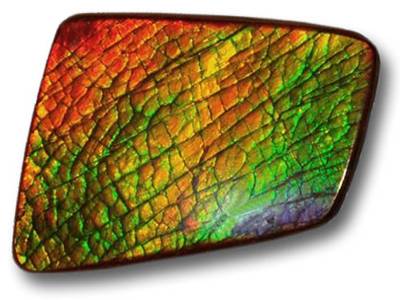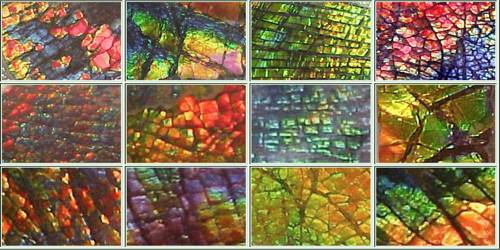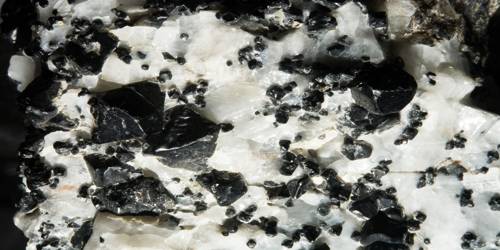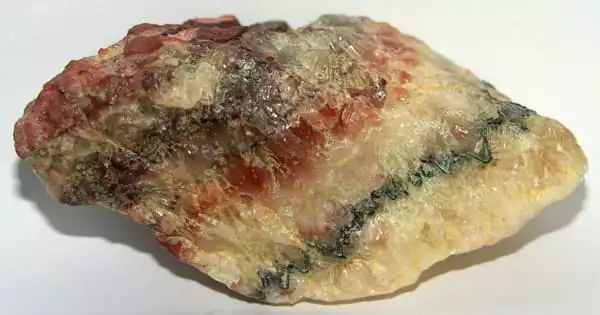Ammolite is a beautiful organic stone that’s formed from Aragonites inside the fossilized shells of Ammonites. It is made of the fossilized shells of ammonites, which in turn are composed primarily of aragonite, the same mineral contained in nacre, with a microstructure inherited from the shell.
Ammolite is also known as Kainah for “small, crawling stone”, gem ammonite, calcentine, and Korite. The latter is a trade name given to the gemstone by the Alberta-based mining company Korite. Marcel Charbonneau and his business partner Mike Berisoff were the first to create commercial doublets of the gem in 1967. They went on to form Ammolite Minerals Ltd.
General Information
- Category: fossilized, mineralized Ammonite shell
- Formula: CaCO3 aragonite polymorph, with minor amounts of calcite, pyrite, silica, and other impurities.

Properties
The chemical composition of ammolite is variable, and aside from aragonite may include calcite, silica, pyrite, or other minerals. The shell itself may contain a number of trace elements, including aluminum; barium; chromium; copper; iron; magnesium; manganese; strontium; titanium; and vanadium. Its crystallography is orthorhombic. Its hardness is 4.5–5.5, and its specific gravity is 2.60–2.85. The refractive index of Canadian material (as measured via sodium light, 589.3 nm) is as follows: α 1.522; β 1.672–1.673; γ 1.676–1.679; biaxial negative. Under ultraviolet light, ammolite may fluoresce a mustard yellow.
- Color: Gray to brown, can be radiant blue, with primarily red to green iridescence.
- Cleavage: no true cleavage
- Fracture: uneven to granular
- Mohs scale hardness: 3.5 – 4.5
- Luster: greasy to dull
- Specific gravity: usually about 2.70 (varies with mineral content)
Occurrence
Significant deposits of gem-quality ammolite are only found in the Bearpaw Formation that extends from Alberta to Saskatchewan in Canada and south to Montana in the USA. However, small deposits have been found as far south as Central Utah which also contains gem-quality ammolite. The best grade of gem quality ammolite is along high energy river systems on the eastern slopes of the Rockies in southern Alberta. Most commercial mining operations have been conducted along the banks of the St. Mary River, in an area south of and between the town of Magrath and the city of Lethbridge. Roughly half of all ammolite deposits are contained within the Kainah (Kainaiwa) reserve, and its inhabitants play a major role in ammolite mining. Since its founding in 1979, Korite has operated primarily within the reservation. The company maintains an agreement with the Kainah (Blood) tribe, with Korite paying the tribe royalties based on how much land the company has mined.
Information Source:
















